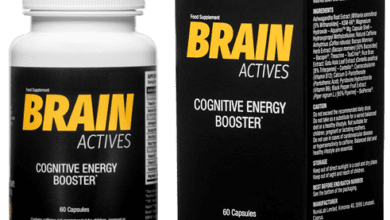
Strength Training for Endurance Athletes: A Road to Enhanced Performance
Strength Training for Endurance Athletes: A Road to Enhanced Performance
Introduction
Endurance athletes, whether they’re runners, cyclists, swimmers, or triathletes, are well aware of the importance of cardiovascular fitness. However, what many athletes may not realize is that integrating strength training into their regimen can be a game-changer. In this comprehensive guide, we’ll explore the benefits, principles, and effective strategies of strength training for endurance athletes.
1. Understanding the Benefits of Strength Training
1.1 Improved Efficiency and Economy
One of the key advantages of incorporating strength training into your endurance routine is improved efficiency and economy. This means that you’ll use less energy to maintain a given pace, allowing you to go farther and faster with less fatigue.
1.2 Reduced Risk of Injury
Strength training helps fortify your muscles and connective tissues, reducing the risk of injury. A robust body can withstand the repetitive stress that endurance sports place on it, minimizing the chances of overuse injuries.
1.3 Enhanced Power Output
Strength training enhances power output, which is crucial for sprint finishes or conquering steep inclines. This added power can make a significant difference in your overall performance.
2. Principles of Strength Training for Endurance Athletes
2.1 Periodization
Periodization involves dividing your training into distinct phases, each with specific objectives. For endurance athletes, this could mean focusing on building strength during the off-season and transitioning to maintenance during race season.
2.2 Specificity
Ensure that your strength training routine aligns with the demands of your sport. For example, cyclists may emphasize leg strength, while swimmers might prioritize upper body strength.
2.3 Core Strength
A strong core is the foundation of endurance performance. Incorporate exercises like planks, bridges, and Russian twists to develop a stable midsection.
2.4 Balance and Flexibility
Don’t neglect balance and flexibility exercises. A balanced body prevents muscle imbalances and reduces the risk of injury.
3. Key Strength Training Exercises for Endurance Athletes
3.1 Squats
Squats are a compound exercise that targets the quads, hamstrings, and glutes. They help build leg strength and power, essential for all endurance athletes.
3.2 Deadlifts
Deadlifts work the posterior chain, including the lower back, glutes, and hamstrings. A strong posterior chain is critical for maintaining proper form and power output during long efforts.
3.3 Lunges
Lunges enhance leg strength, stability, and balance. They are particularly effective for runners, helping to reduce the risk of knee and hip injuries.
3.4 Push-Ups
Push-ups strengthen the upper body, especially the chest, shoulders, and triceps. This improved upper body strength can aid swimmers and triathletes in maintaining a streamlined position in the water.
3.5 Planks
Planks are a fantastic core exercise that improves stability and posture. A strong core is essential for maintaining form during extended training sessions.
4. Integration into Your Training Schedule
4.1 Off-Season Focus
During the off-season, allocate more time to strength training. This is the ideal period for building strength and addressing weaknesses.
4.2 Maintenance During Race Season
As you approach your competitive season, reduce the intensity and frequency of strength training sessions to maintain your gains while focusing on sport-specific training.
4.3 Timing Matters
Schedule strength sessions strategically. Many athletes prefer to do strength training on non-impact days to avoid fatigue before key workouts or races.
5. Sample Strength Training Program
To help you get started, here’s a sample strength training program for endurance athletes:
Week 1-4 (Off-Season)
- Monday: Squats (3 sets of 10 reps)
- Wednesday: Deadlifts (3 sets of 8 reps)
- Friday: Lunges (3 sets of 12 reps)
Week 5-8 (Off-Season)
- Monday: Squats (4 sets of 10 reps)
- Wednesday: Deadlifts (4 sets of 8 reps)
- Friday: Lunges (4 sets of 12 reps)
Week 9-12 (Pre-Season)
- Monday: Squats (3 sets of 8 reps)
- Wednesday: Deadlifts (3 sets of 6 reps)
- Friday: Lunges (3 sets of 10 reps)
Adjust the weights and repetitions as per your fitness level and specific needs. Always warm up adequately before starting your strength session and cool down afterward.
6. Monitoring Progress
6.1 Keep a Training Journal
Maintain a training journal to track your progress, including the weights lifted, repetitions performed, and how you feel during and after workouts. This can help you identify areas of improvement.
6.2 Regular Testing
Periodically test your strength to assess your progress. This can motivate you and guide adjustments to your training program.
7. Nutrition and Recovery
7.1 Fuel Your Body
Adequate nutrition is vital for both training and recovery. Ensure you’re consuming enough calories, protein, and nutrients to support your endurance and strength goals.
7.2 Prioritize Recovery
Recovery is where the gains happen. Make sleep a priority, practice foam rolling, and consider regular massages to aid in muscle recovery.
8. Conclusion
Incorporating strength training into your endurance training program can elevate your performance to new heights. It offers benefits such as improved efficiency, reduced injury risk, and enhanced power output. By adhering to the principles of periodization, specificity, and core strength, and integrating key exercises into your routine, you can achieve a well-rounded, robust athletic foundation. Remember to tailor your strength training program to your sport, monitor your progress, and prioritize proper nutrition and recovery. With dedication and consistency, strength training can be the secret weapon that helps you achieve your endurance goals and conquer new challenges.
Read this article
Unlocking the Secrets to a Stronger Core: A Comprehensive Guide



